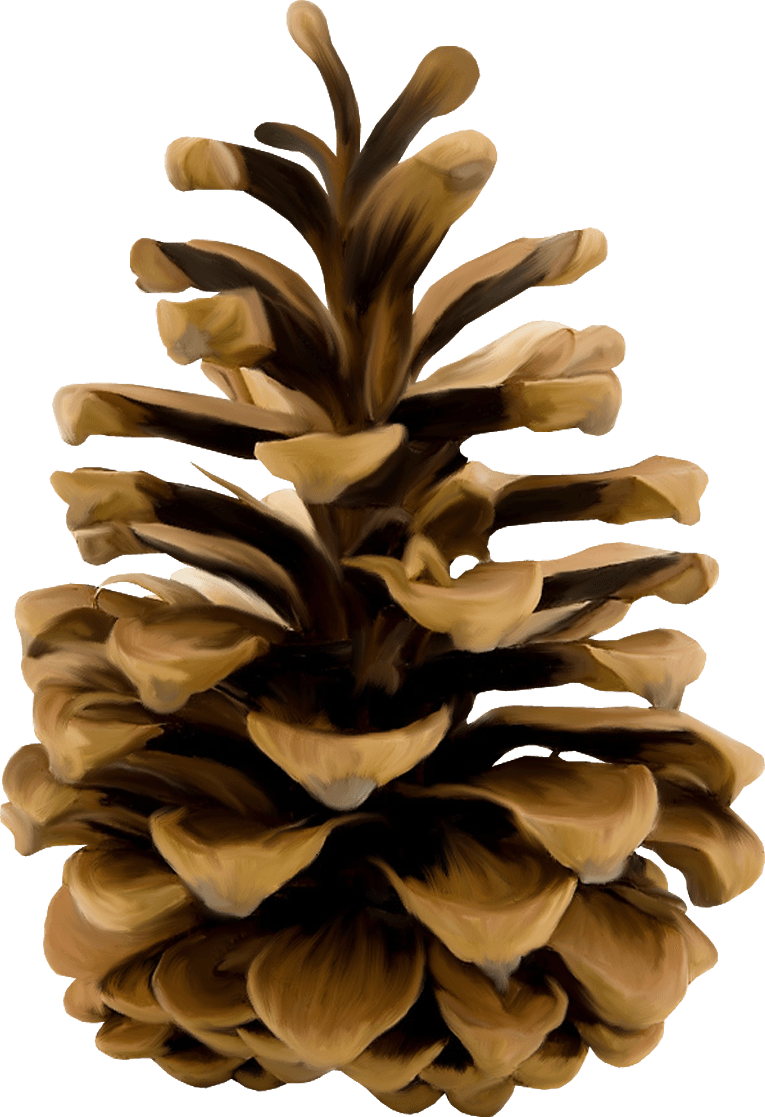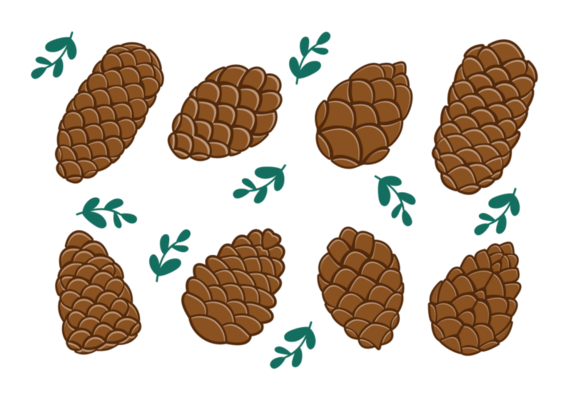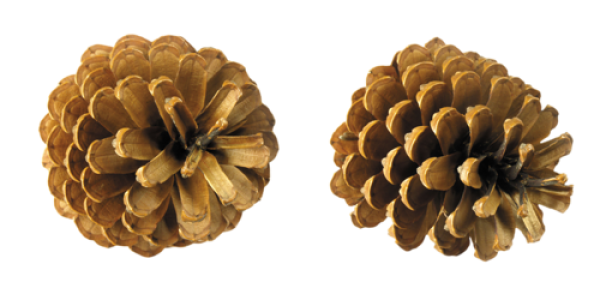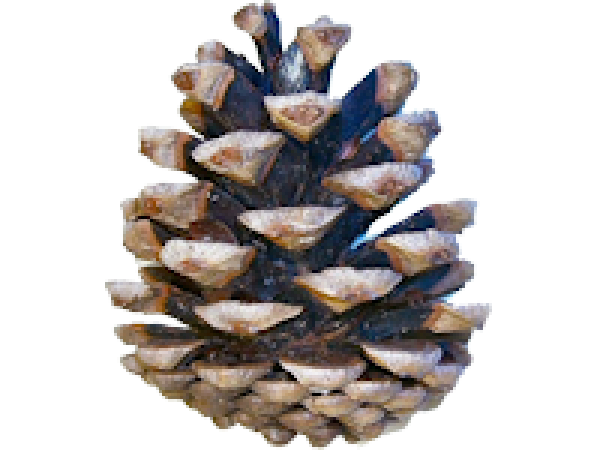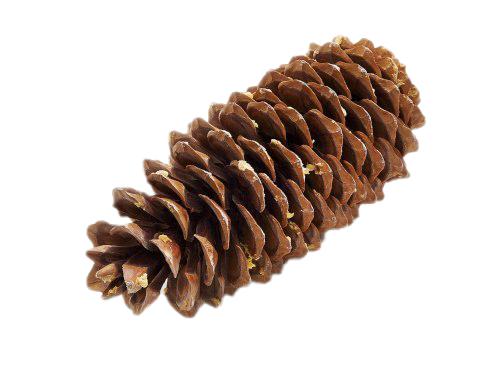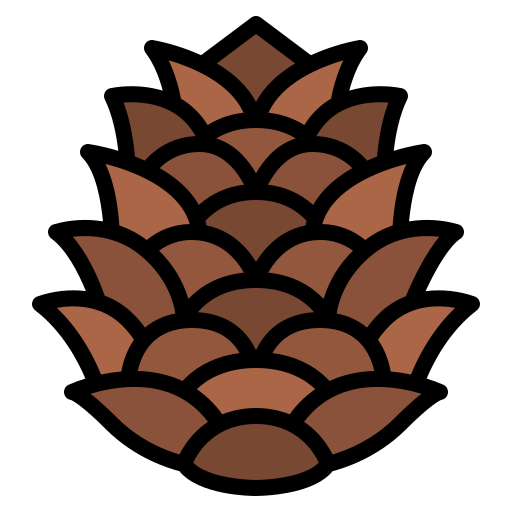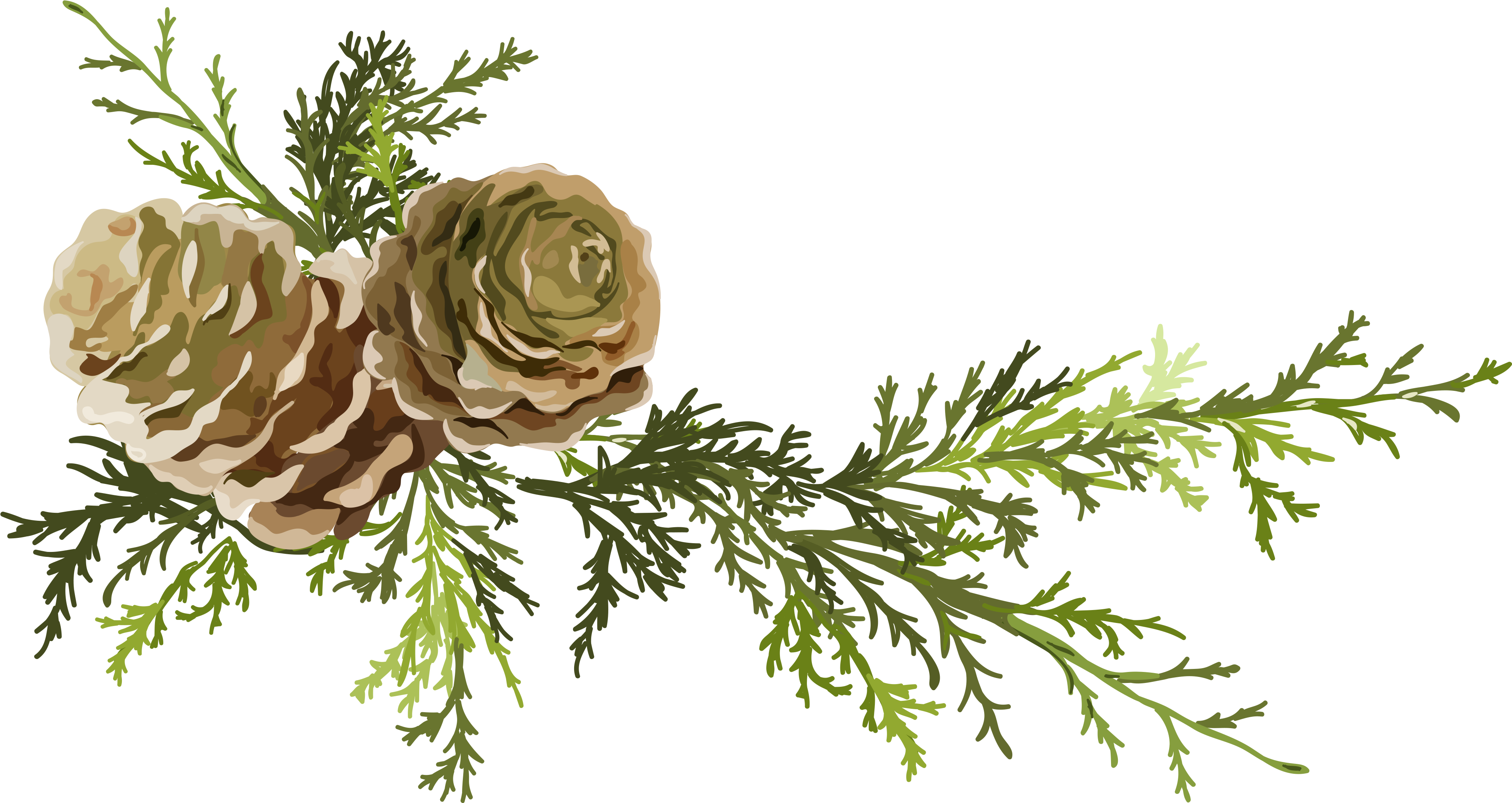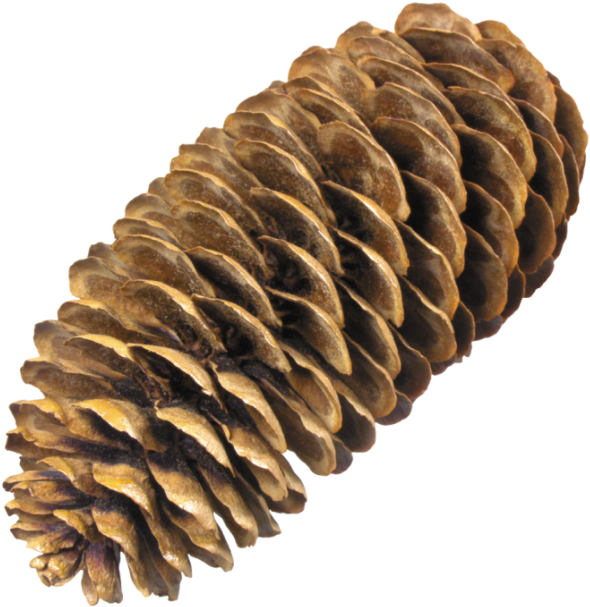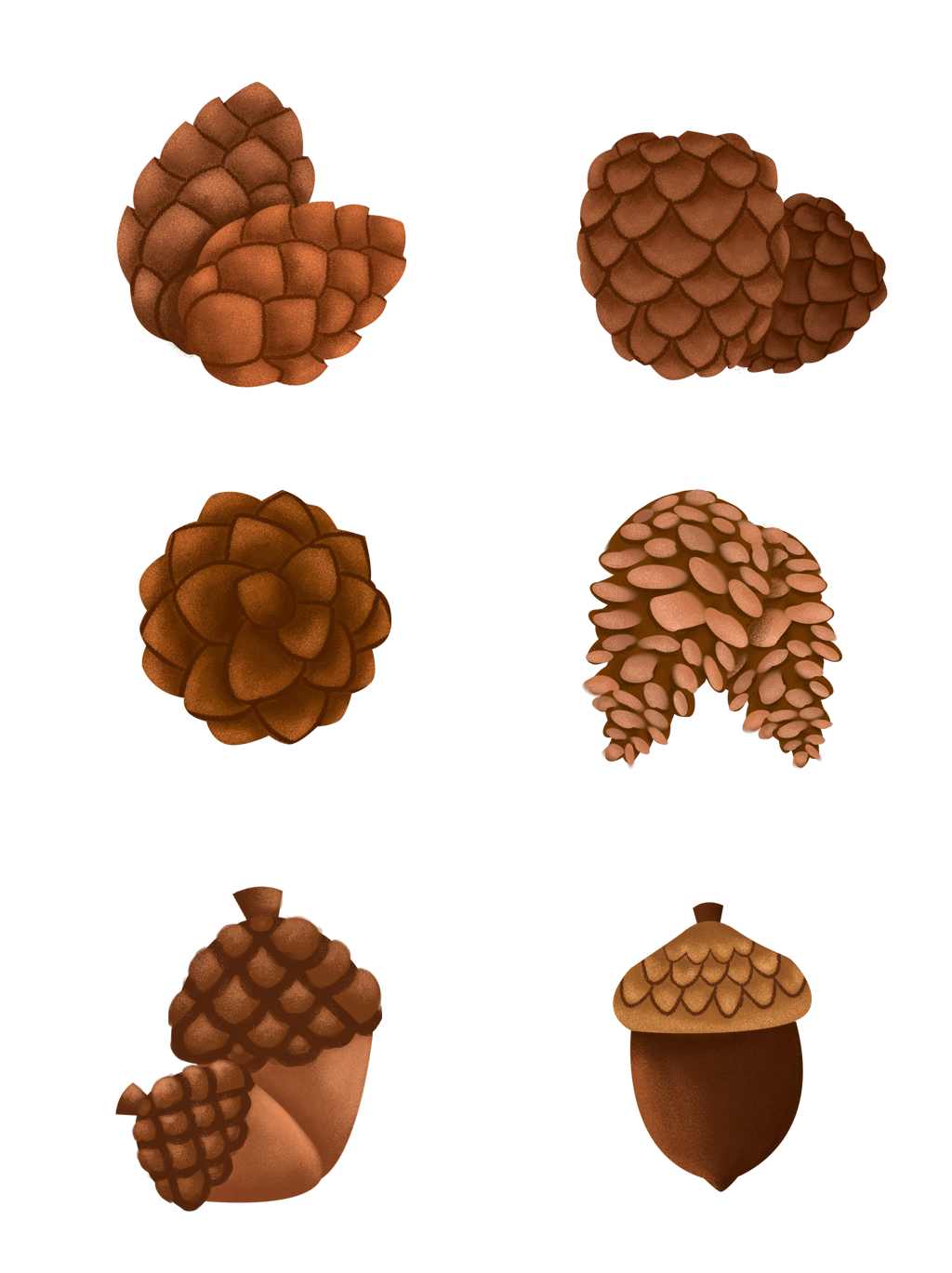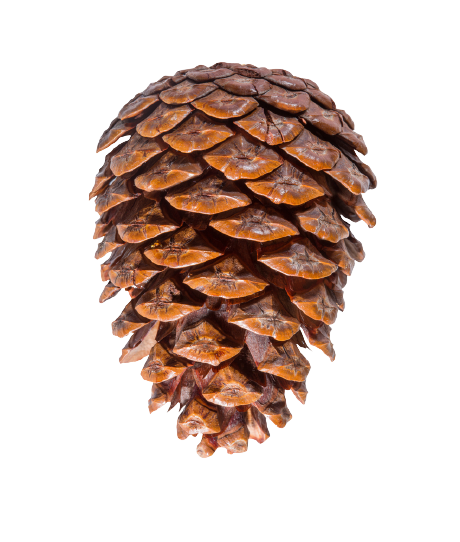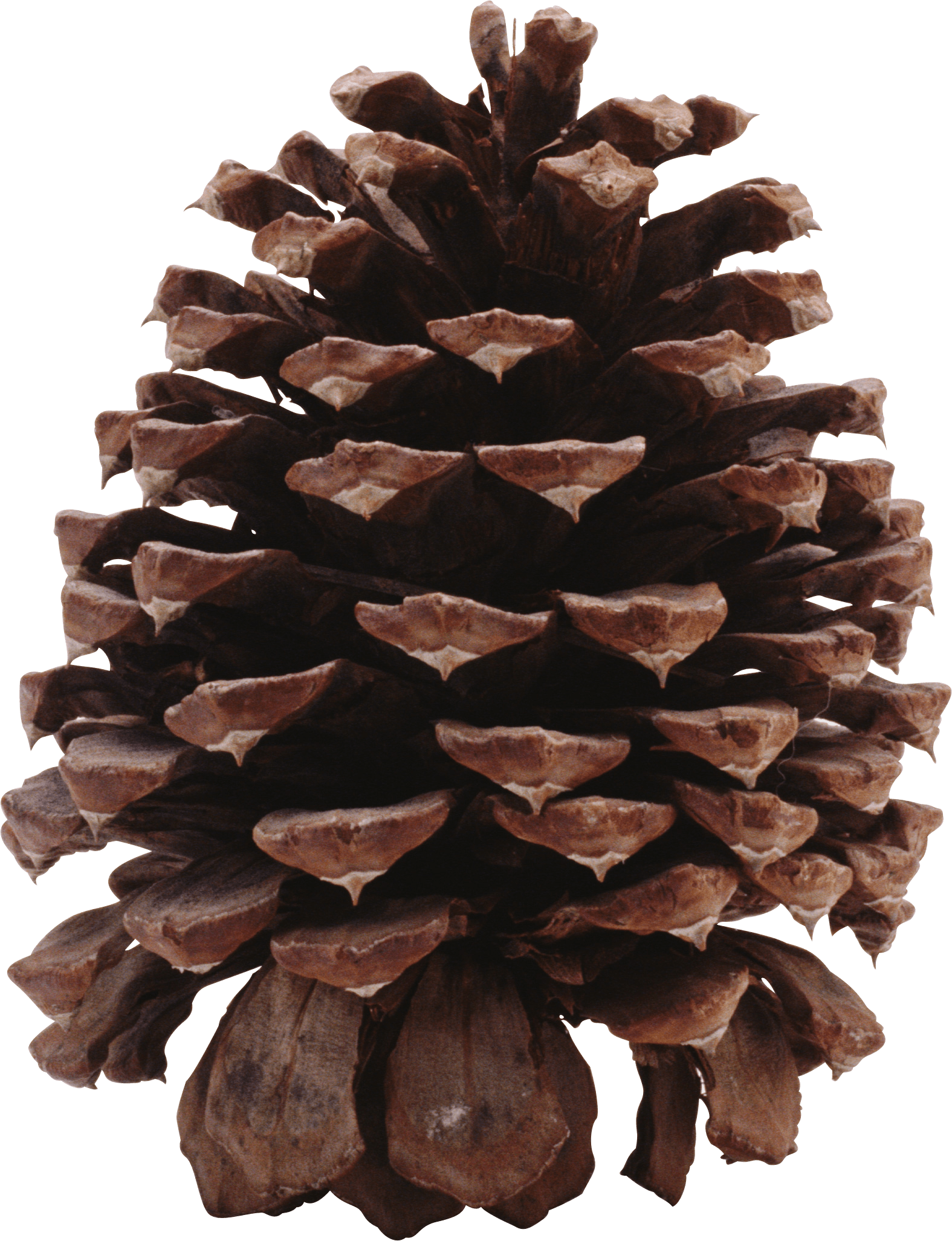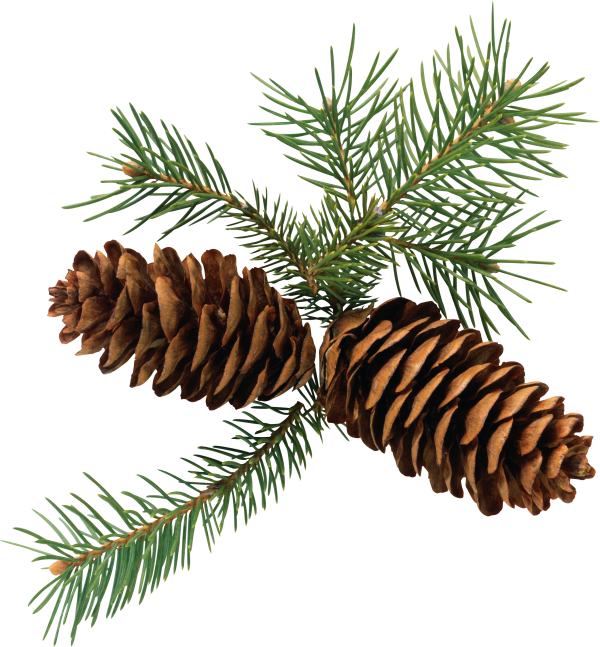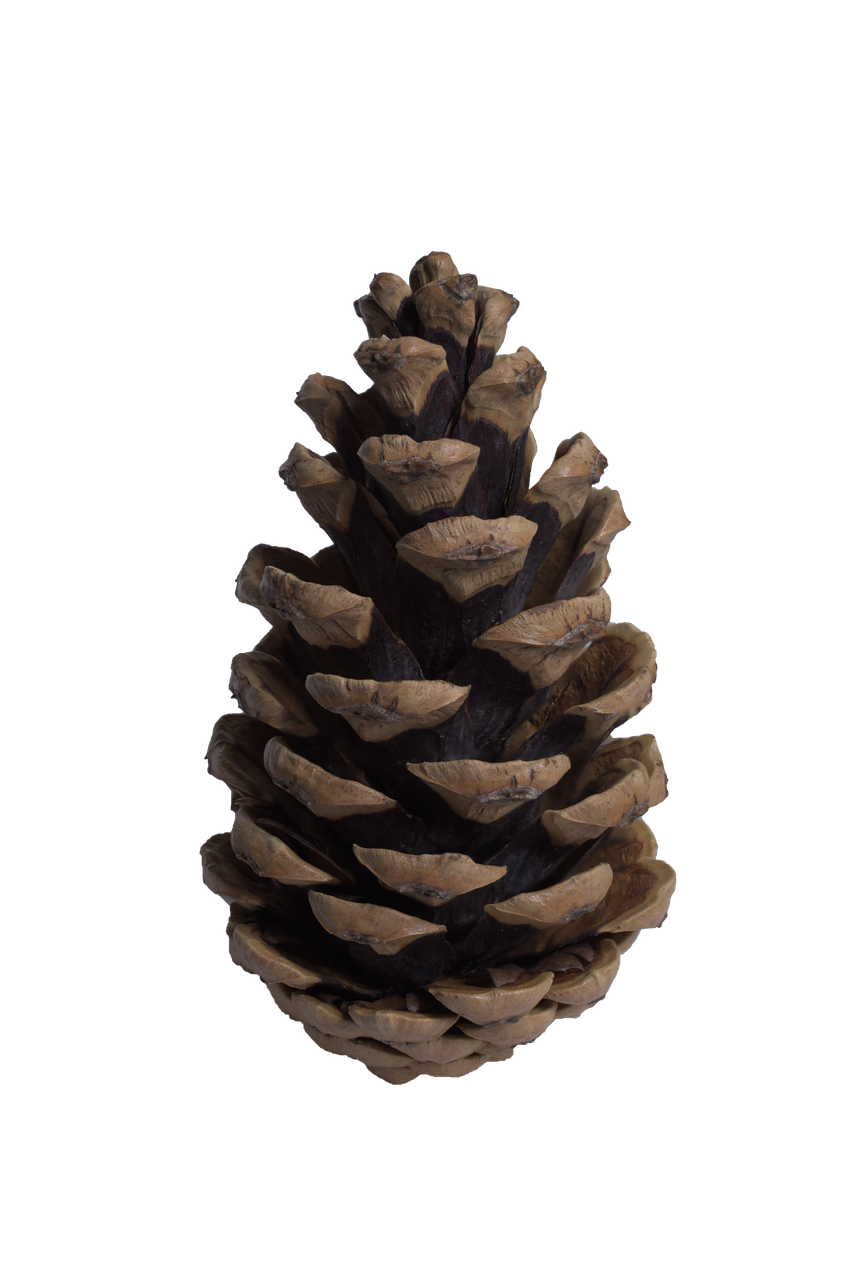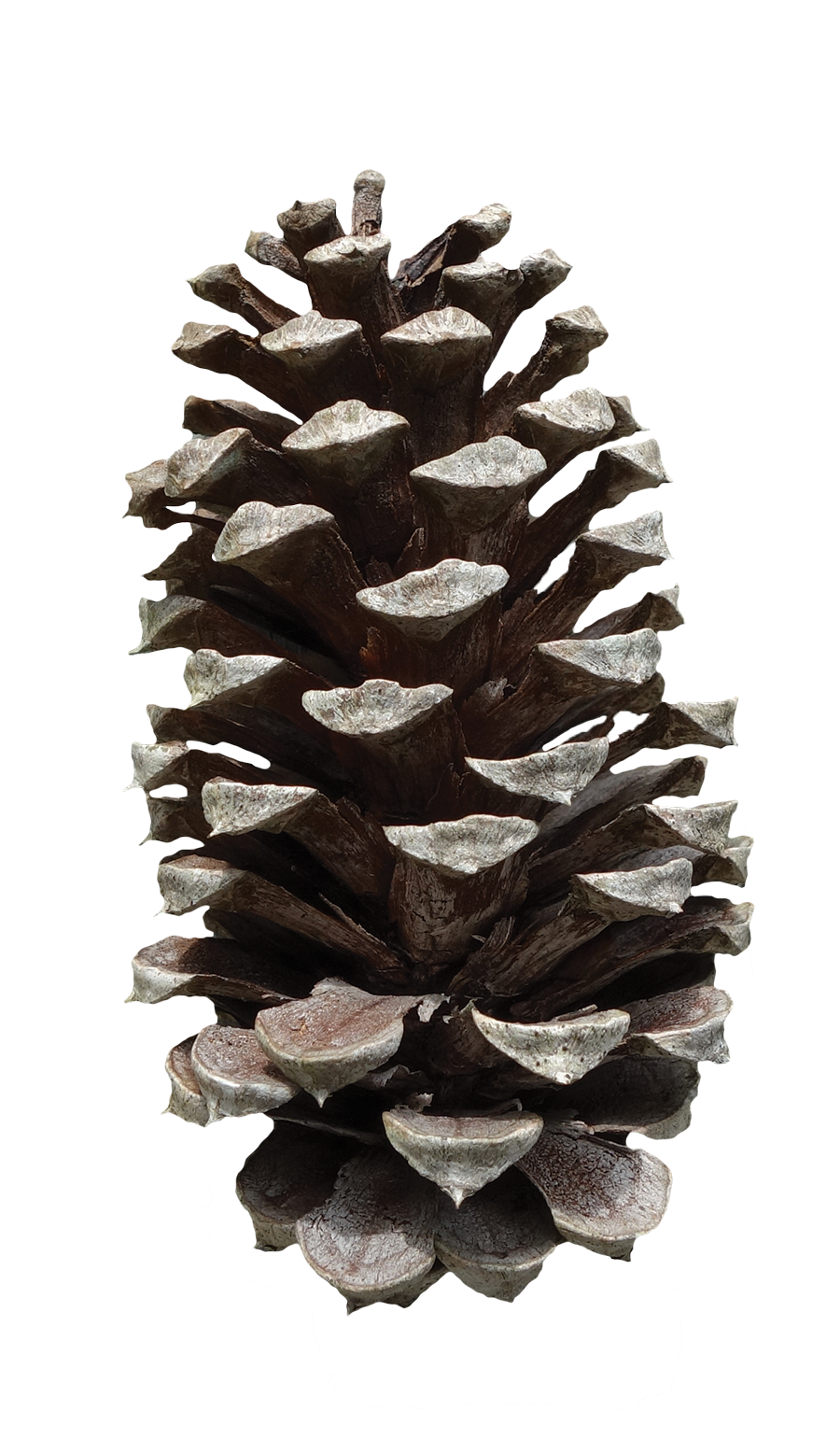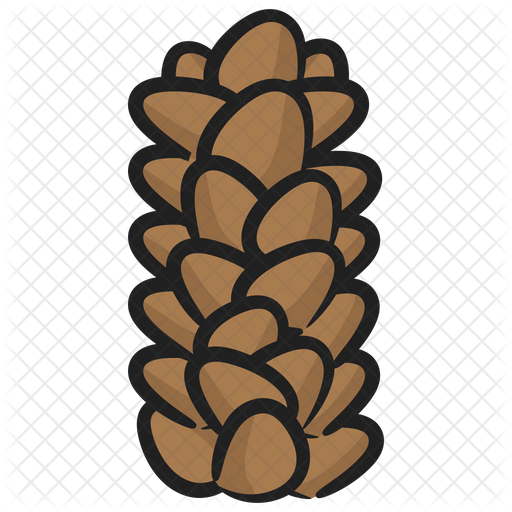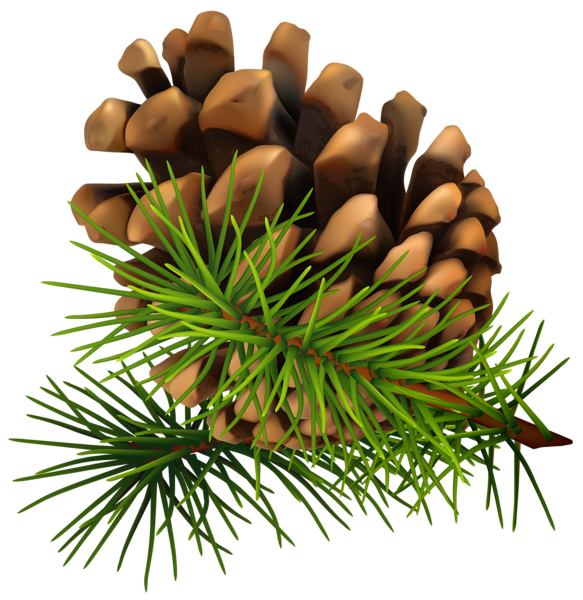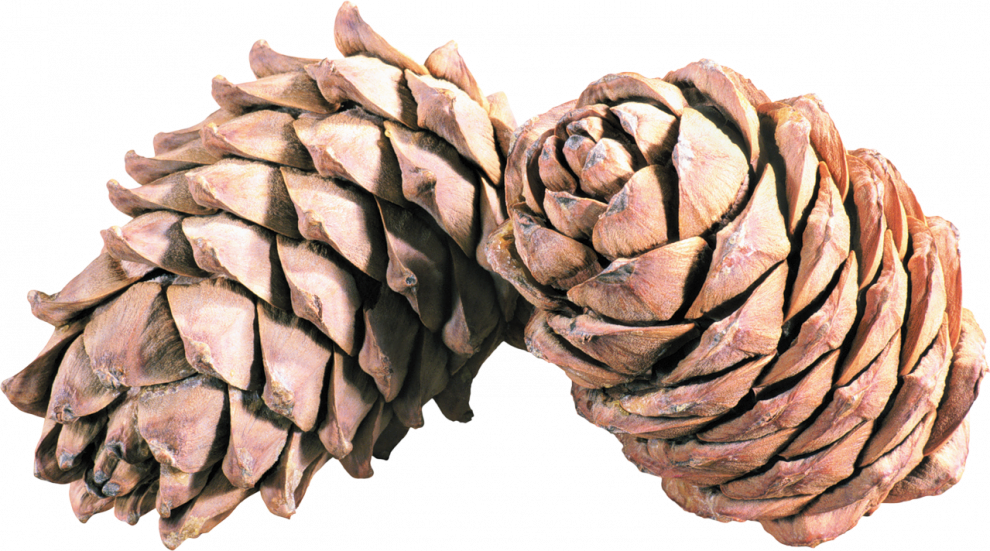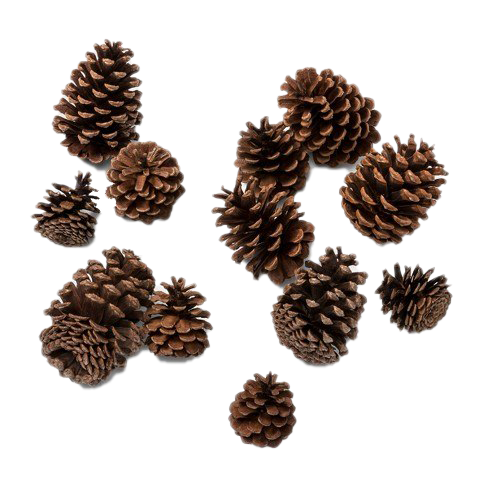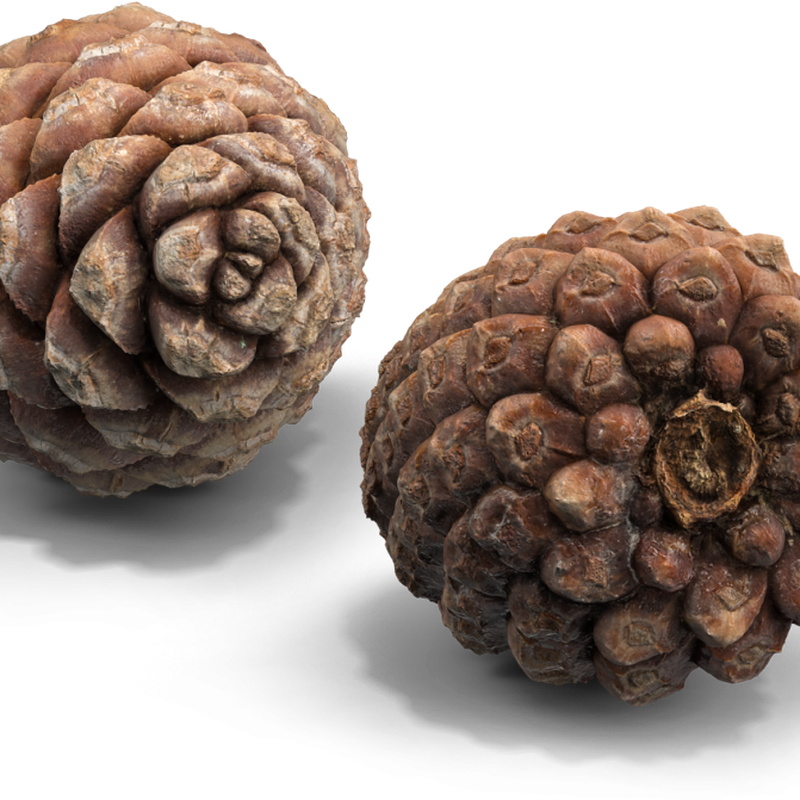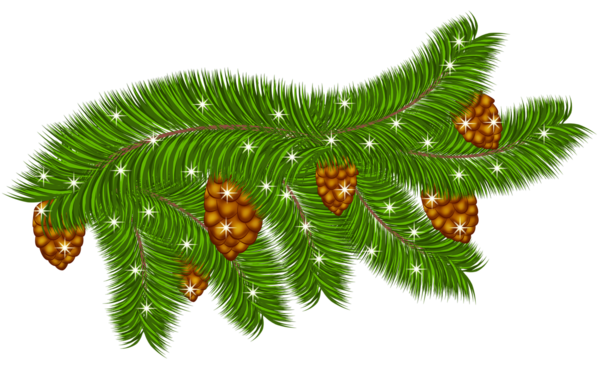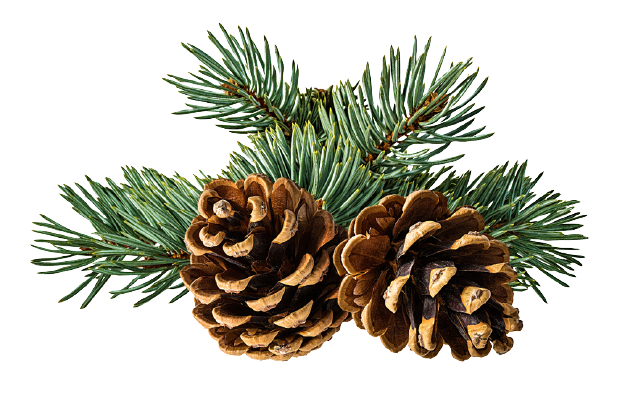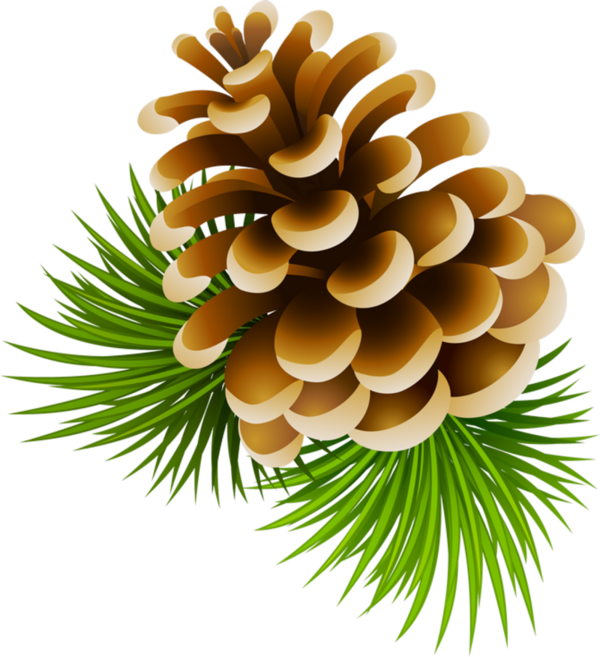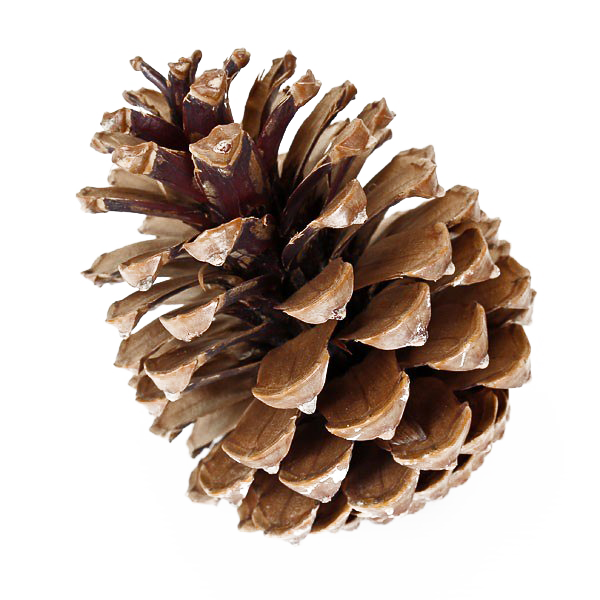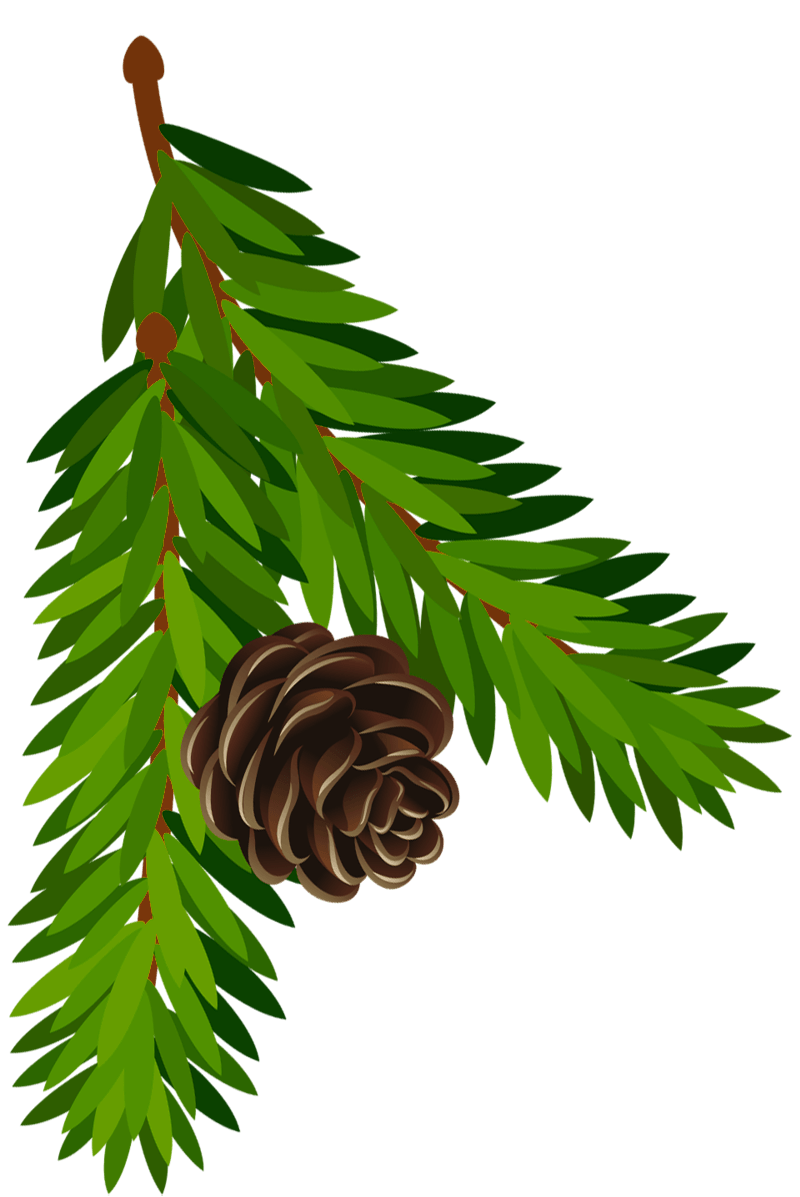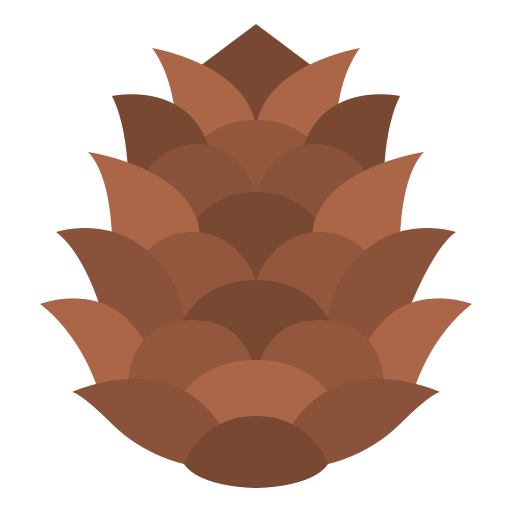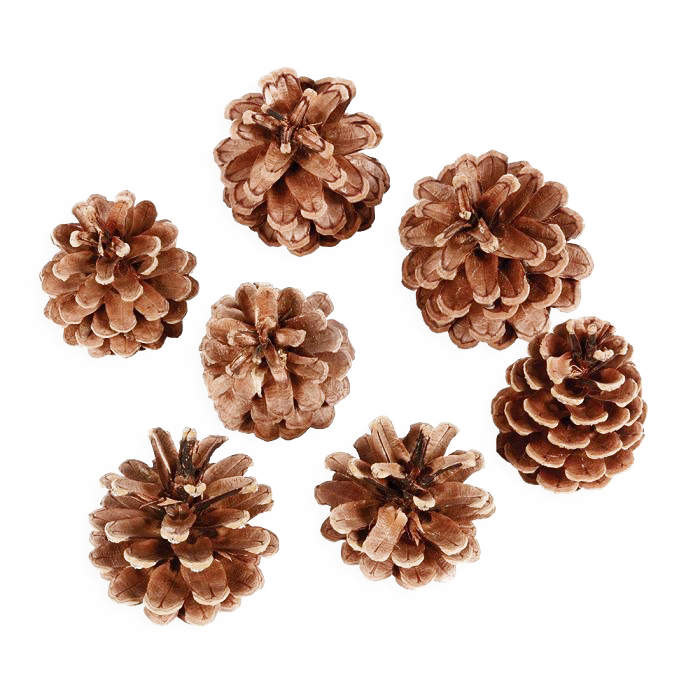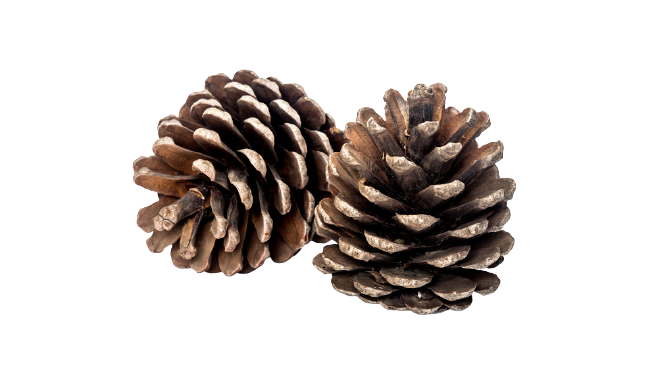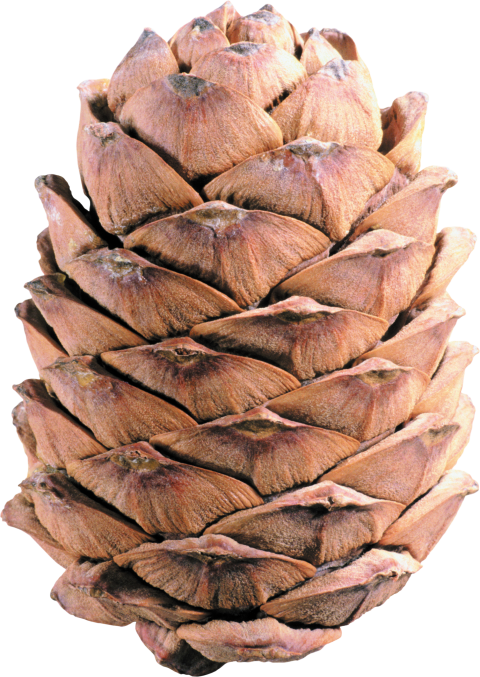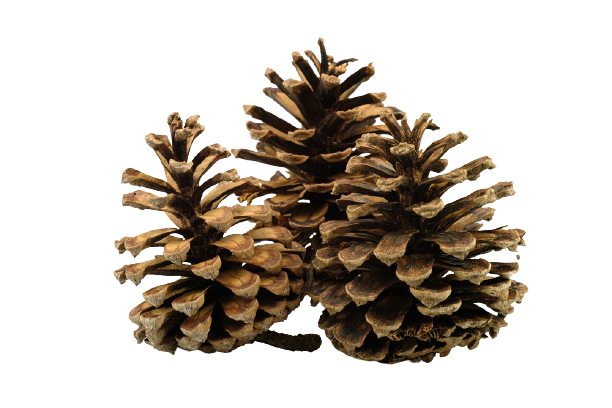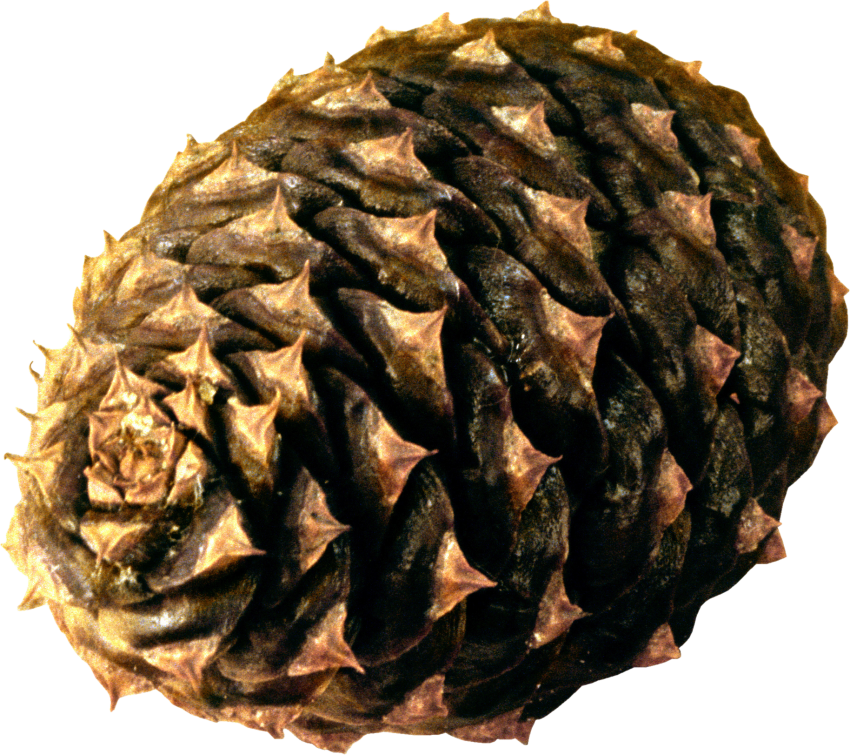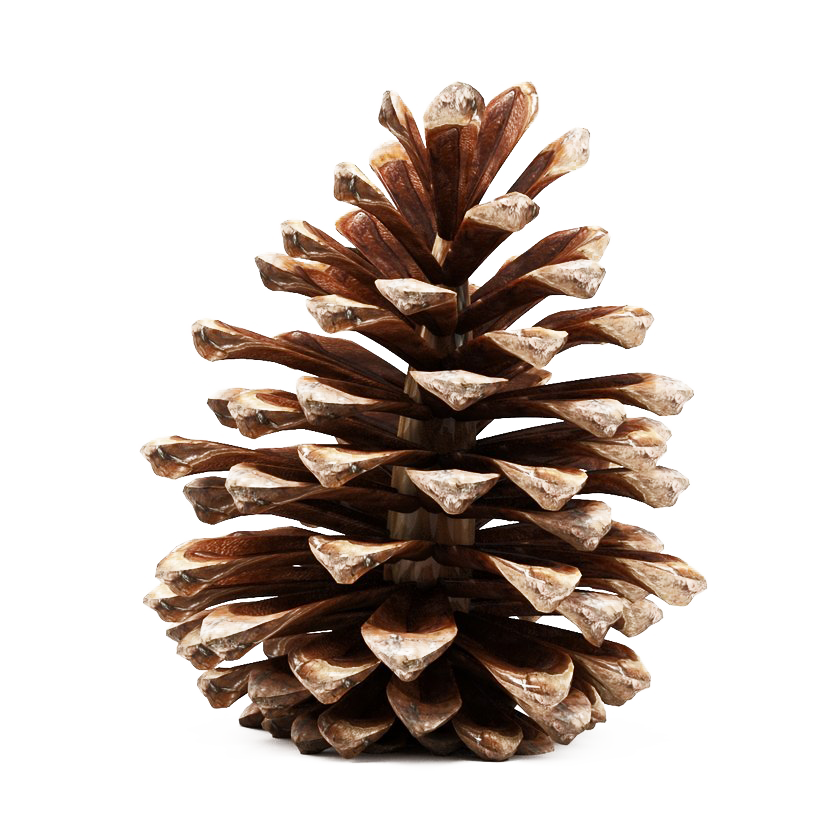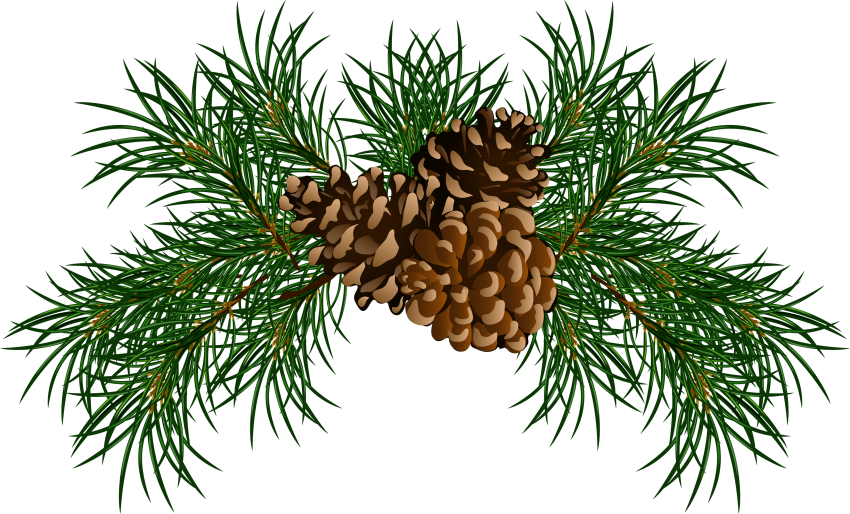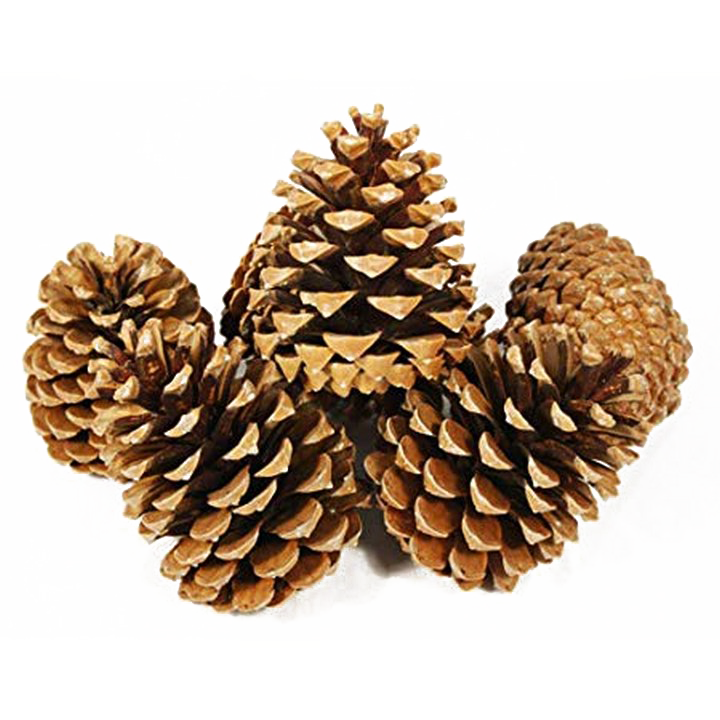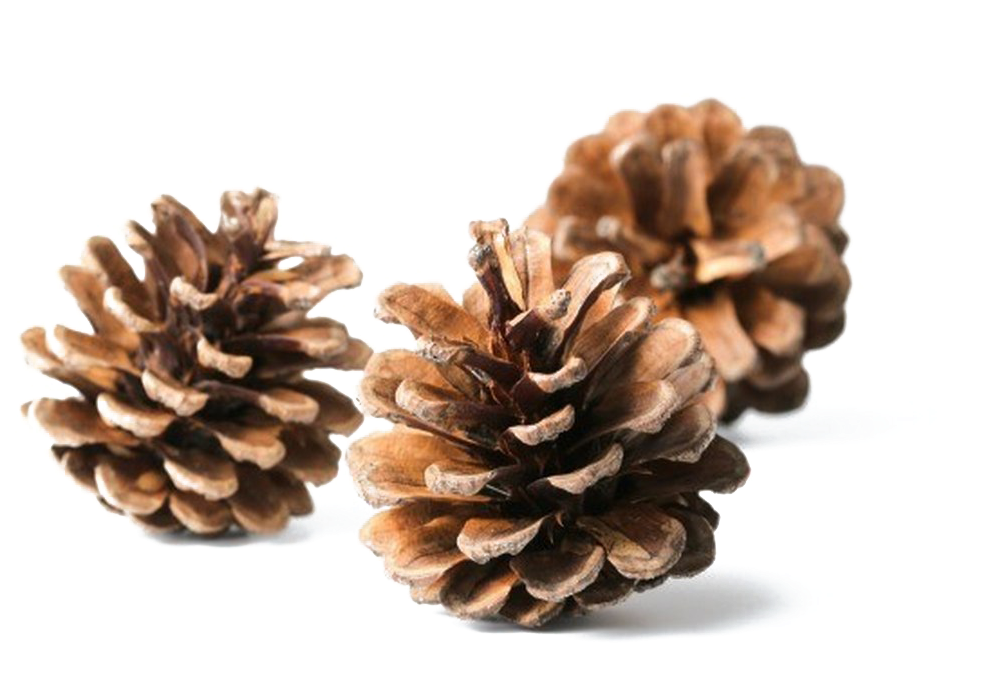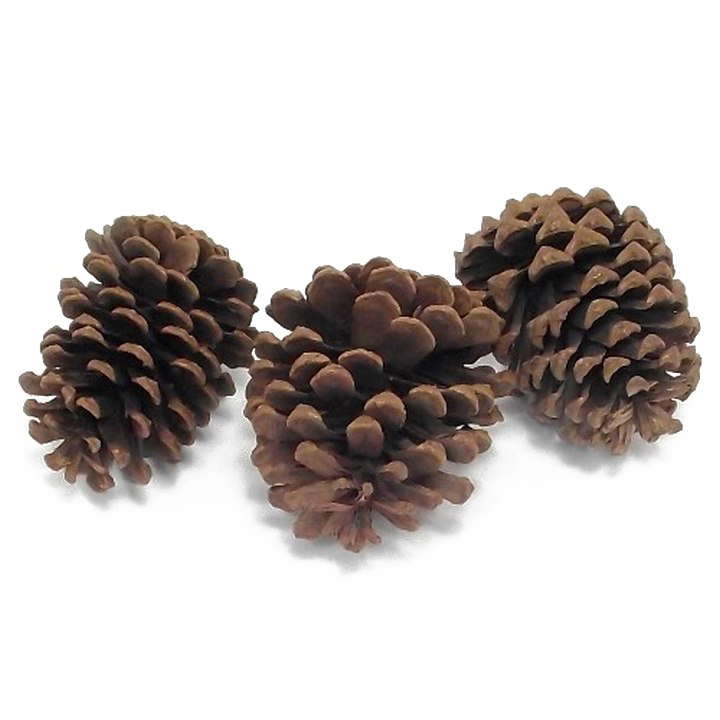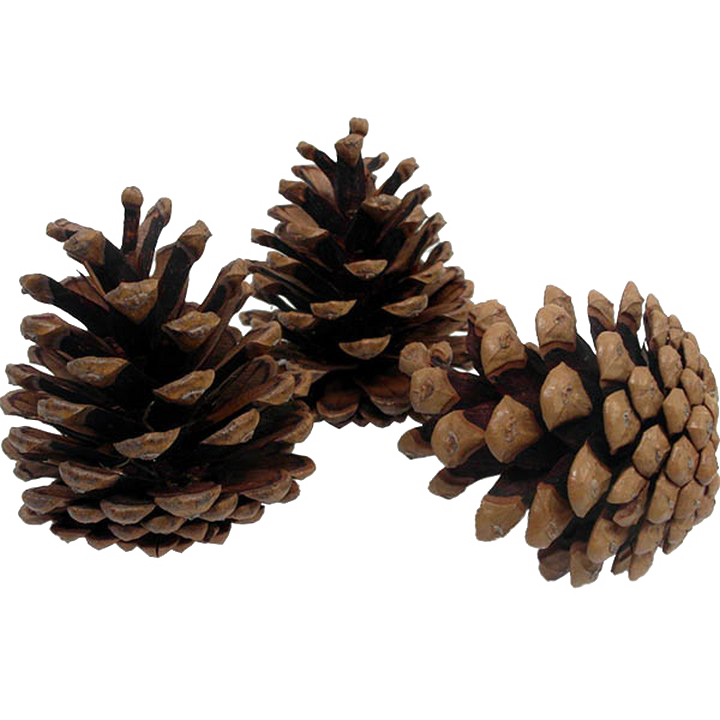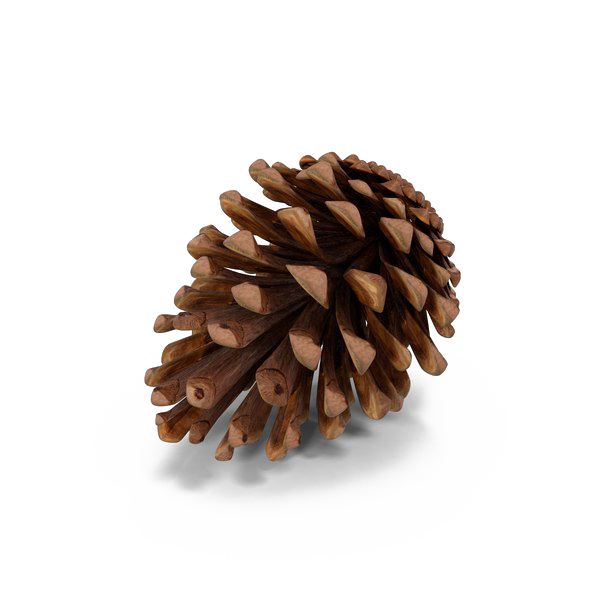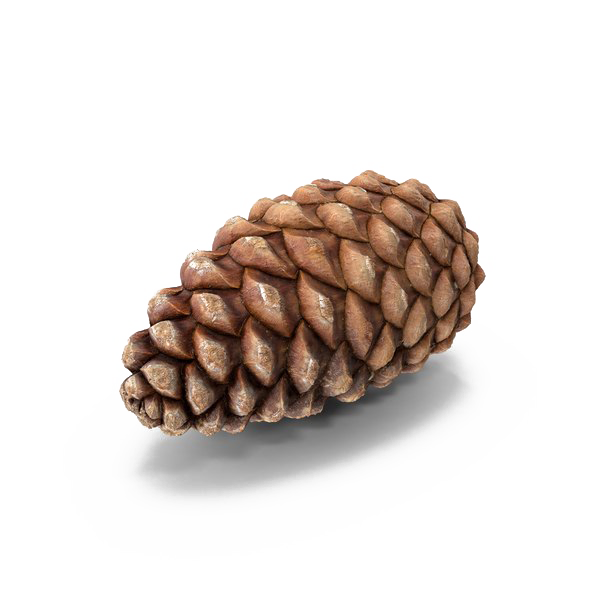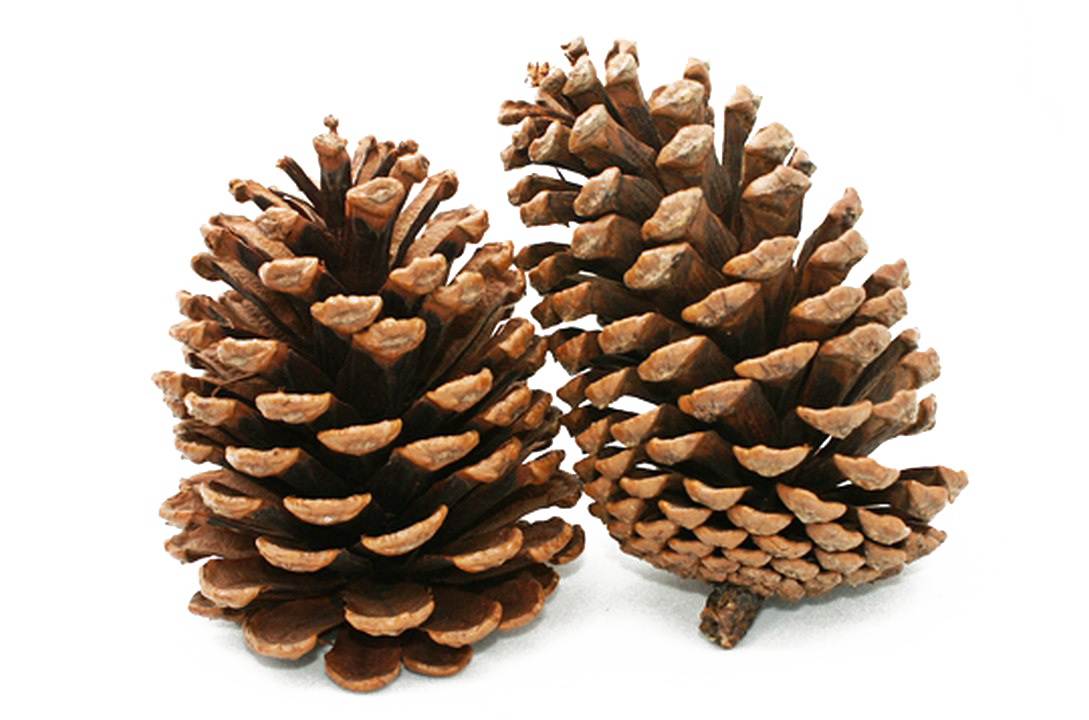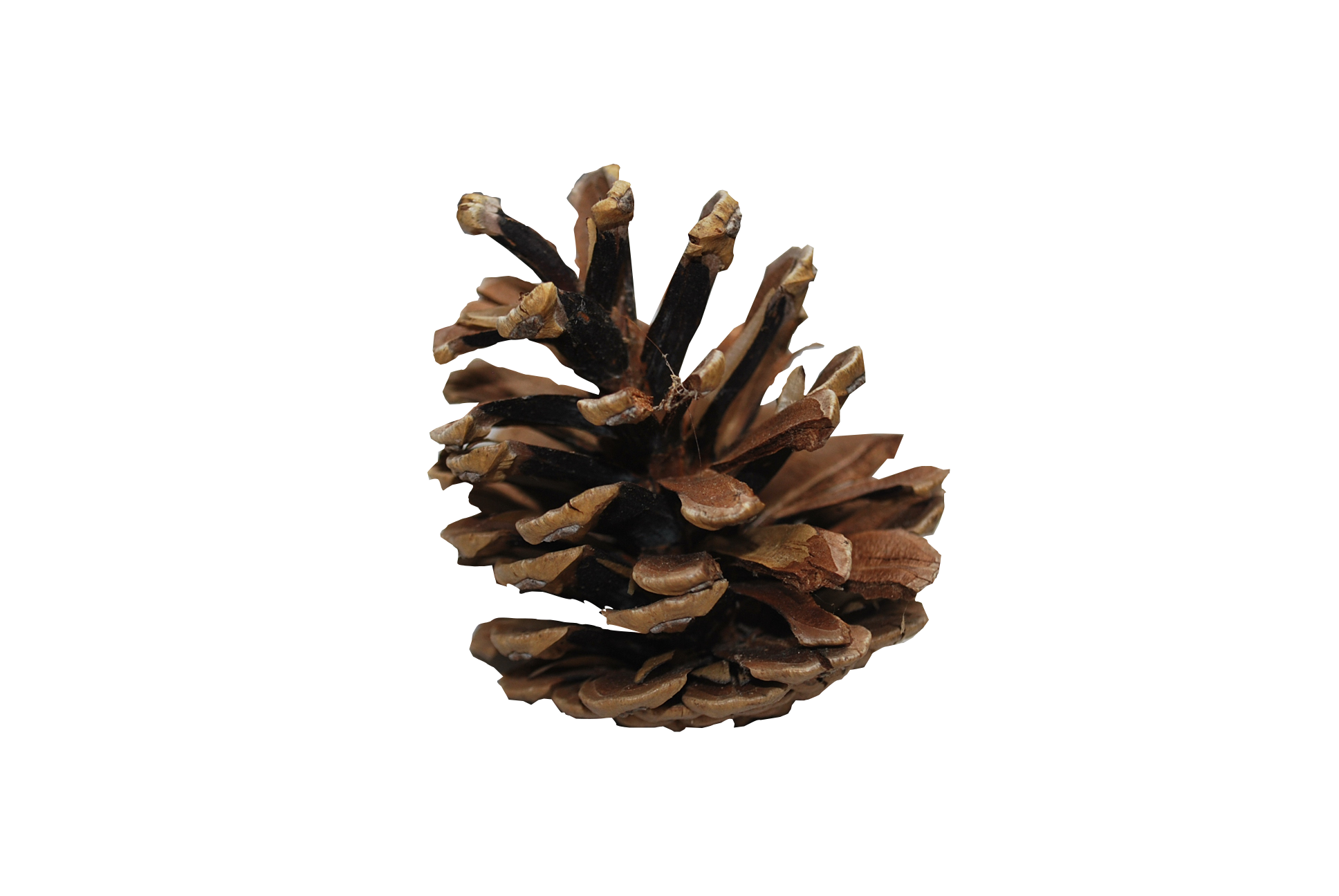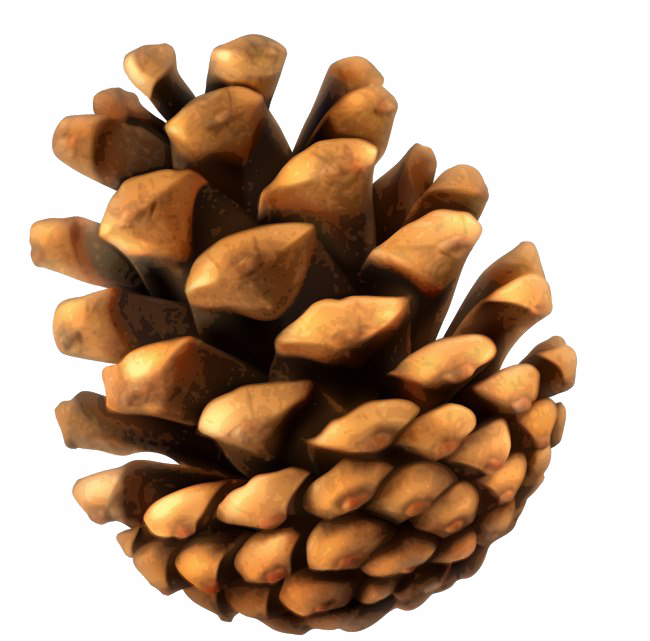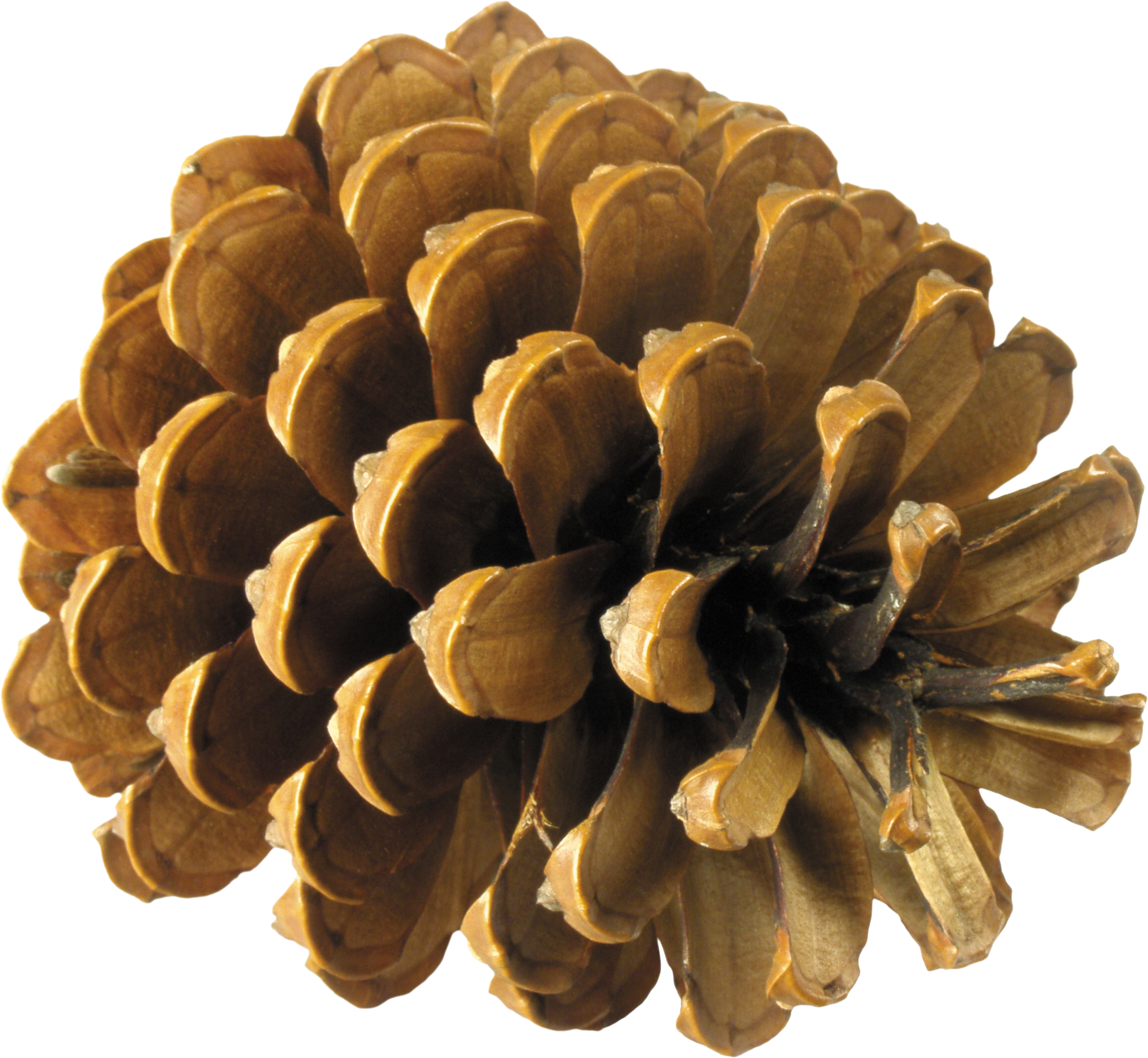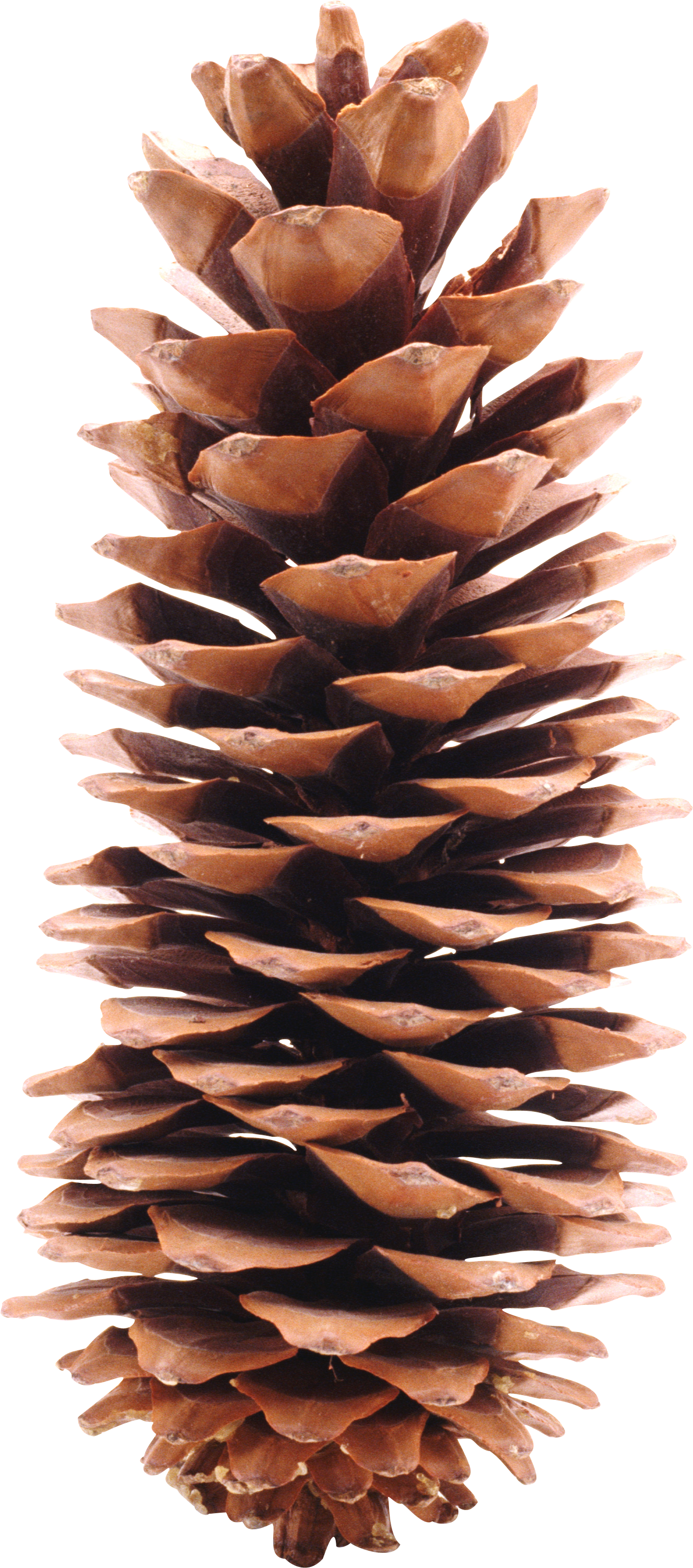Download top and best high-quality free Conifer Cone PNG Transparent Images backgrounds available in various sizes. To view the full PNG size resolution click on any of the below image thumbnail.
License Info: Creative Commons 4.0 BY-NC
A conifer cone is a reproductive organ found on plants belonging to the Pinophyta (conifers) division. The female cone, which produces seeds, is the well-known woody cone. Even at full maturity, the male cone, which produces pollen, is generally herbaceous and considerably less prominent. The word “cone” comes from the Greek word konos (pinecone), which was also the term given to the geometric cone. Scales are the individual plates that make up a cone. The first year of growth of a seed scale on a conifer cone is referred to as the umbo, which appears as a protuberance at the end of the two-year-old scale.
All conifers have a substantially similar male cone (microstrobilus or pollen cone), with very minor differences (mainly in scale arrangement) across species. Microsporophylls branch out from a central axis (modified leaves). One or more microsporangia can be seen beneath each microsporophyll (pollen sacs).
Ovules are contained in the female cone (megastrobilus, seed cone, or ovulation cone), which form seeds when pollen fertilizes them. The female cone structure varies more dramatically between conifer families, and it is typically critical for identifying many conifer species.
Pines, spruces, firs, cedars, larches, and other members of the pine family have imbricate cones (that is, with scales overlapping each other like fish scales). The “archetypal” tree cones are these pine cones, especially the woody female cones.
The female cone has two types of scales: bract scales and seed scales (or ovuliferous scales), each of which is formed from a highly modified branchlet and is subtended by each bract scale. Each seed scale has two ovules on the upper-side base that grow into seeds after pollen grains fertilize them. The bract scales appear initially and are visible during pollination; the seed scales appear later and envelop and protect the seeds, with the bract scales seldom extending much further.
The scales open briefly to receive gametophytes, close during fertilization and development, then reopen at maturity to let the seed to escape. Most Pinaceae genera require 6″8 months to mature after pollination, whereas cedars take 12 months and most pines take 18″24 months (rarely longer). The seed scales stretch back when the cones dry up, or the cones disintegrate with the seed scales dropping off (as in firs, cedars, and golden larch). The cones range in size from 2″60 cm long and 1″20 cm wide, and are conic, cylindrical, or ovoid (egg-shaped).
The moisture content of non-serotinous pine cones determines when they open after ripening”cones open when dry and close when wet. This increases the distance traveled from the parent tree by ensuring that the little, windborne seeds are disseminated during generally dry conditions. Even after seed distribution, a pine cone will go through several cycles of opening and shutting over its lifetime. This happens to elder cones while they’re still clinging to branches and even after they’ve fallen to the forest floor.
The state of fallen pine cones is a rough indicator of the moisture level of the forest floor, which is a key indicator of wildfire danger. Cones that are closed suggest wet conditions, whereas open cones indicate a dry forest floor.
As a result, people in temperate areas have long used pine cones to anticipate dry and wet weather, generally by suspending a harvested pine cone from a thread outdoors to monitor air humidity.
Download Conifer cone PNG images transparent gallery.
- Conifer Cone Vector PNG
Resolution: 640 × 1280
Size: 100 KB
Image Format: .png
Download
- Christmas Conifer Cone PNG Picture
Resolution: 765 × 1117
Size: 274 KB
Image Format: .png
Download
- Conifer Cone Vector PNG Photo
Resolution: 571 × 400
Size: 154 KB
Image Format: .png
Download
- Conifer Cone PNG Images
Resolution: 600 × 288
Size: 174 KB
Image Format: .png
Download
- Conifer Cone PNG Image
Resolution: 600 × 450
Size: 119 KB
Image Format: .png
Download
- Conifer Cone PNG HD Image
Resolution: 500 × 376
Size: 149 KB
Image Format: .png
Download
- Christmas Conifer Cone PNG File
Resolution: 512 × 512
Size: 49 KB
Image Format: .png
Download
- Conifer Cone Element PNG Photo
Resolution: 3982 × 2114
Size: 932 KB
Image Format: .png
Download
- Christmas Conifer Cone
Resolution: 590 × 607
Size: 640 KB
Image Format: .png
Download
- Christmas Conifer Cone No Background
Resolution: 1024 × 1369
Size: 784 KB
Image Format: .png
Download
- Christmas Conifer Cone PNG Photos
Resolution: 460 × 542
Size: 243 KB
Image Format: .png
Download
- Christmas Conifer Cone PNG Clipart
Resolution: 1575 × 2053
Size: 1502 KB
Image Format: .png
Download
- Conifer Cone PNG File
Resolution: 600 × 647
Size: 459 KB
Image Format: .png
Download
- Christmas Conifer Cone PNG Free Image
Resolution: 842 × 1280
Size: 515 KB
Image Format: .png
Download
- Conifer Cone Vector PNG Cutout
Resolution: 900 × 1556
Size: 1298 KB
Image Format: .png
Download
- Conifer Cone PNG Pic
Resolution: 512 × 512
Size: 142 KB
Image Format: .png
Download
- Conifer Cone Background PNG
Resolution: 583 × 600
Size: 358 KB
Image Format: .png
Download
- Christmas Conifer Cone PNG
Resolution: 990 × 551
Size: 912 KB
Image Format: .png
Download
- Conifer Cone Vector PNG File
Resolution: 488 × 488
Size: 246 KB
Image Format: .png
Download
- Christmas Conifer Cone PNG Image HD
Resolution: 800 × 800
Size: 765 KB
Image Format: .png
Download
- Christmas Conifer Cone PNG HD Image
Resolution: 819 × 250
Size: 119 KB
Image Format: .png
Download
- Conifer Cone Vector
Resolution: 600 × 365
Size: 296 KB
Image Format: .png
Download
- Christmas Conifer Cone Transparent
Resolution: 617 × 404
Size: 340 KB
Image Format: .png
Download
- Christmas Conifer Cone PNG Image File
Resolution: 600 × 657
Size: 522 KB
Image Format: .png
Download
- Conifer Cone Transparent
Resolution: 600 × 600
Size: 422 KB
Image Format: .png
Download
- Christmas Conifer Cone Background PNG
Resolution: 800 × 1197
Size: 110 KB
Image Format: .png
Download
- Christmas Conifer Cone PNG Pic
Resolution: 512 × 512
Size: 29 KB
Image Format: .png
Download
- Conifer Cone No Background
Resolution: 700 × 700
Size: 563 KB
Image Format: .png
Download
- Christmas Conifer Cone PNG Images
Resolution: 658 × 379
Size: 183 KB
Image Format: .png
Download
- Conifer Cone PNG Photo
Resolution: 480 × 677
Size: 592 KB
Image Format: .png
Download
- Christmas Conifer Cone PNG Cutout
Resolution: 612 × 408
Size: 235 KB
Image Format: .png
Download
- Conifer Cone PNG Image HD
Resolution: 850 × 755
Size: 1086 KB
Image Format: .png
Download
- Conifer Cone PNG Image File
Resolution: 820 × 820
Size: 623 KB
Image Format: .png
Download
- Conifer Cone Vector PNG Image
Resolution: 850 × 514
Size: 483 KB
Image Format: .png
Download
- Conifer Cone PNG Picture
Resolution: 720 × 720
Size: 602 KB
Image Format: .png
Download
- Conifer Cone Element PNG Image
Resolution: 1004 × 673
Size: 838 KB
Image Format: .png
Download
- Conifer Cone PNG Clipart
Resolution: 720 × 720
Size: 369 KB
Image Format: .png
Download
- Conifer Cone Vector PNG Pic
Resolution: 720 × 720
Size: 427 KB
Image Format: .png
Download
- Conifer Cone PNG Images HD
Resolution: 600 × 600
Size: 189 KB
Image Format: .png
Download
- Conifer Cone PNG Free Image
Resolution: 600 × 600
Size: 203 KB
Image Format: .png
Download
- Conifer Cone PNG Cutout
Resolution: 1089 × 720
Size: 803 KB
Image Format: .png
Download
- Conifer Cone
Resolution: 1936 × 1296
Size: 2949 KB
Image Format: .png
Download
- Conifer Cone PNG Photos
Resolution: 650 × 641
Size: 436 KB
Image Format: .png
Download
- Conifer Cone PNG
Resolution: 2586 × 2383
Size: 6376 KB
Image Format: .png
Download
- Christmas Conifer Cone PNG Images HD
Resolution: 1327 × 3004
Size: 5311 KB
Image Format: .png
Download

